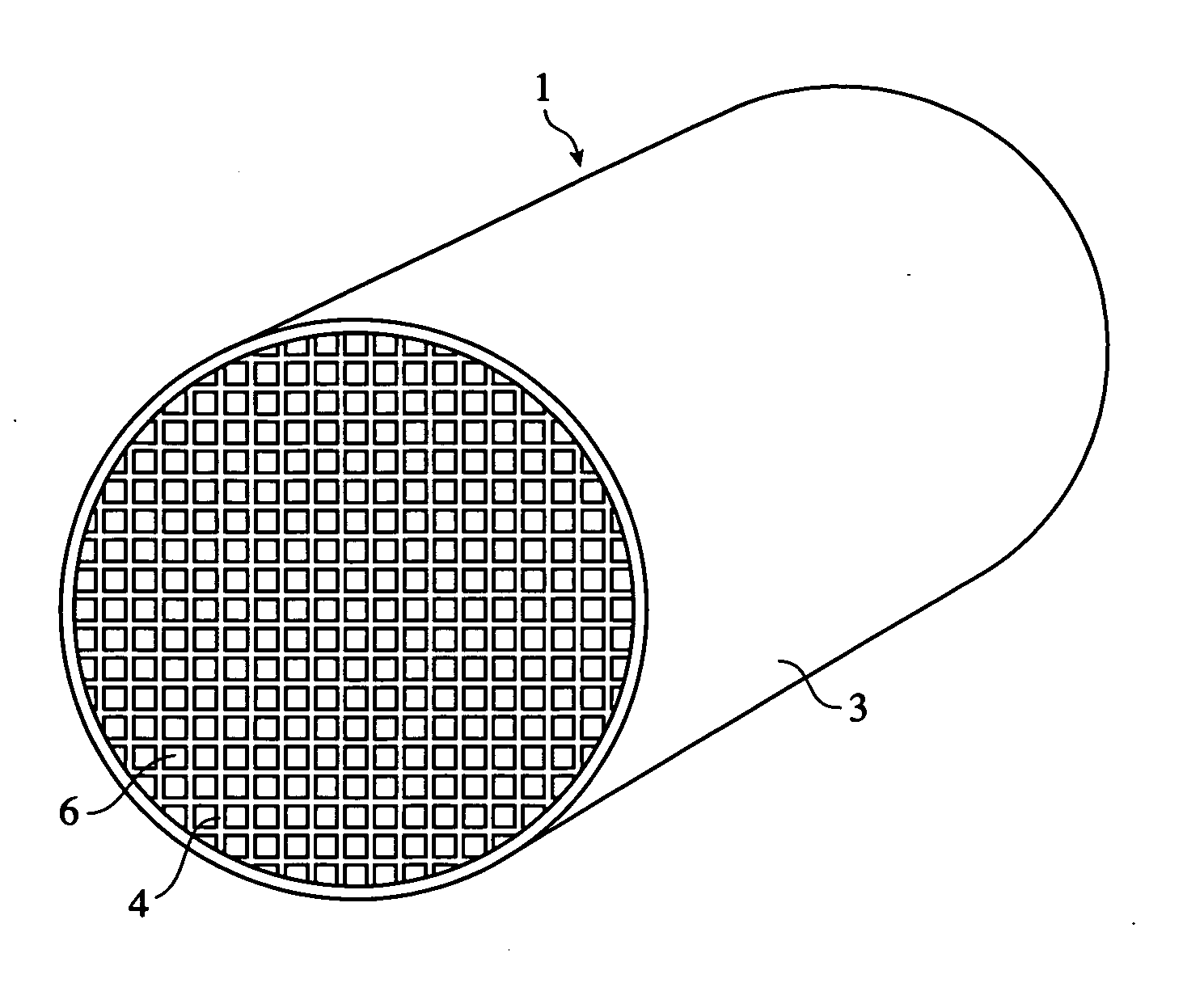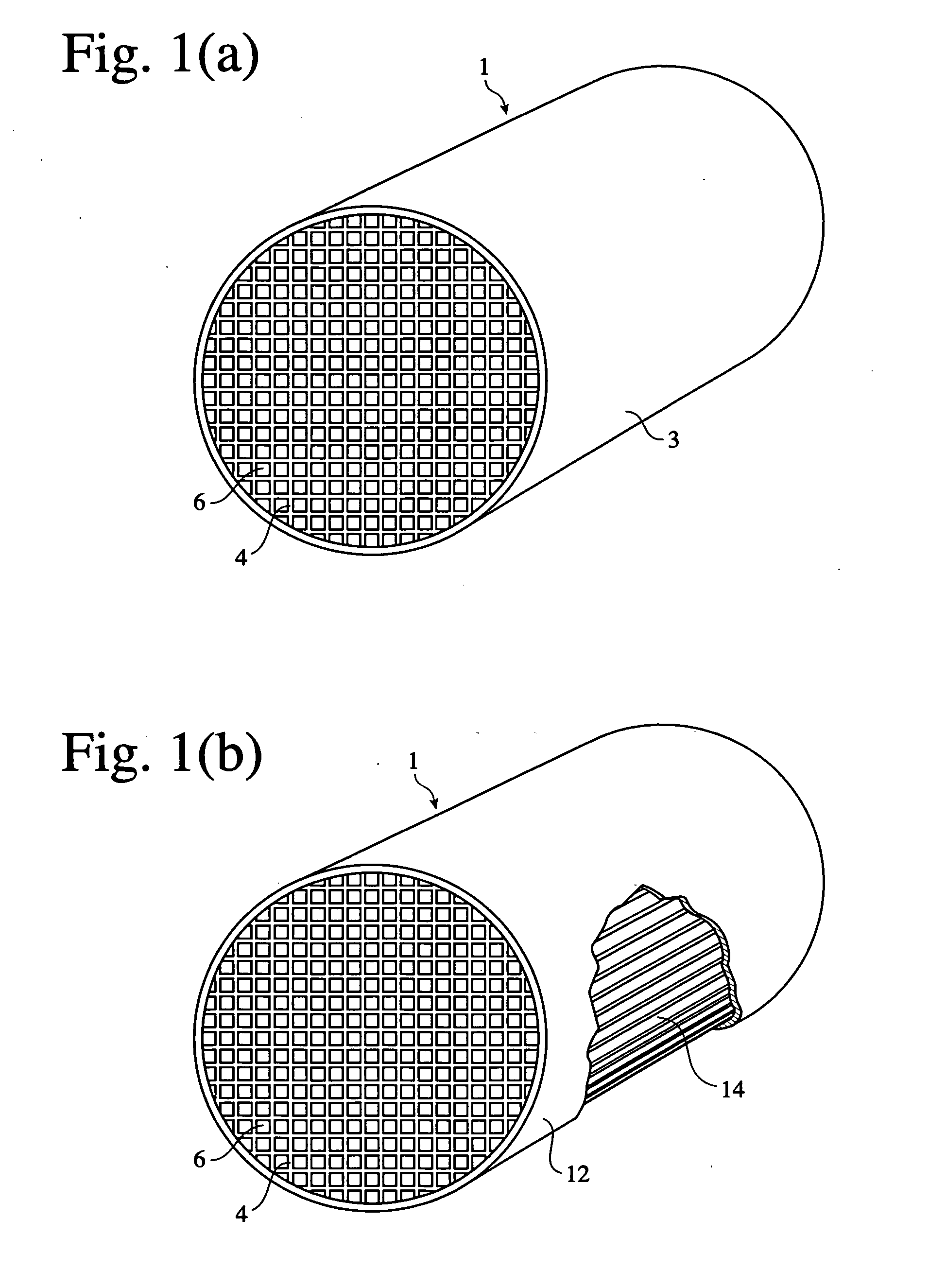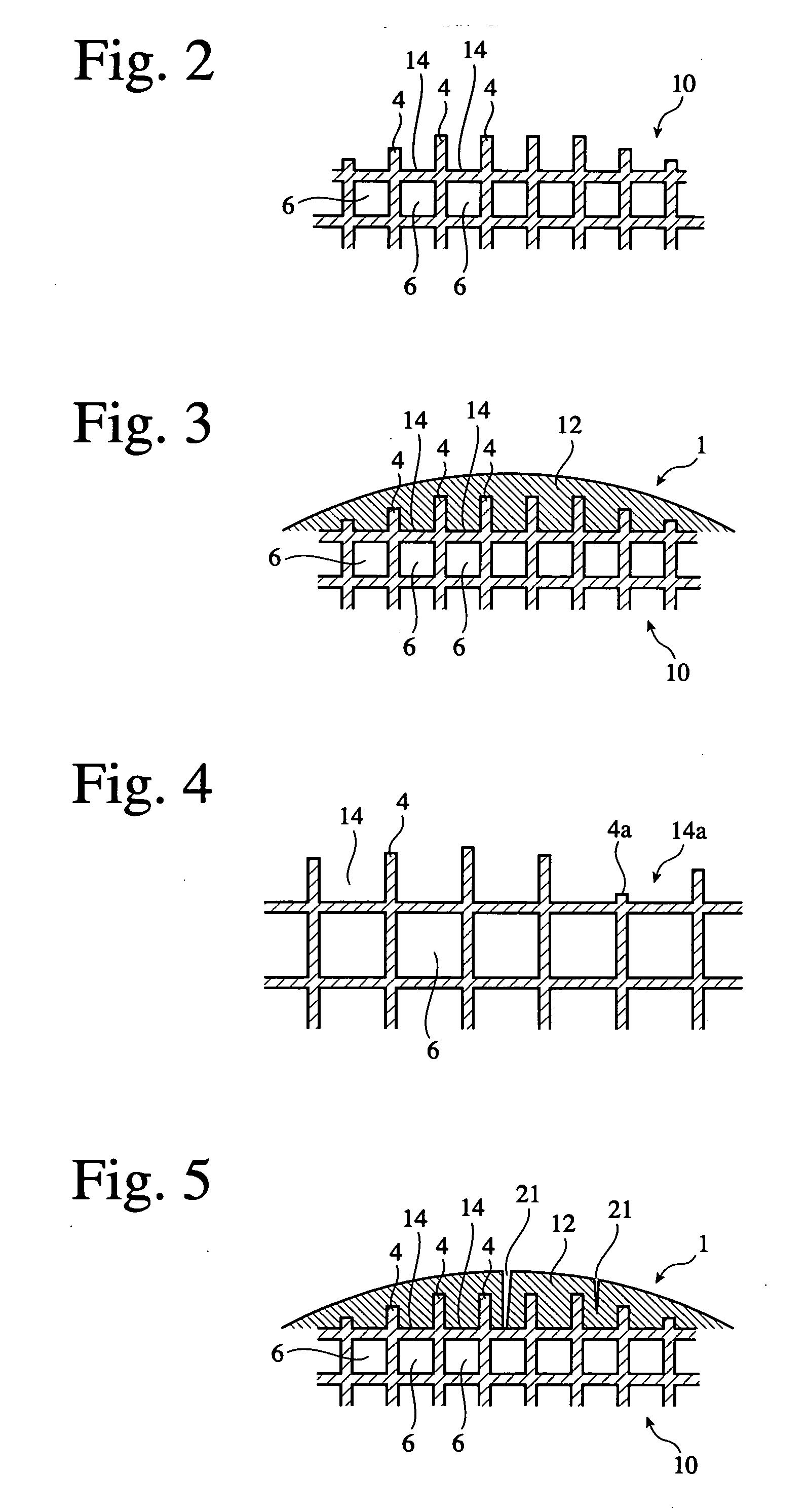Ceramic honeycomb structure, process for producing the same and coat material for use in the production
- Summary
- Abstract
- Description
- Claims
- Application Information
AI Technical Summary
Benefits of technology
Problems solved by technology
Method used
Image
Examples
first embodiment
[1] First Embodiment
[0056] The ceramic honeycomb structure according to the first embodiment comprises a ceramic honeycomb body having grooves axially extending on its outer surface and cell walls constituting a large number of flow paths inside the grooves, and a peripheral wall layer covering the grooves, the ceramic honeycomb body comprising stress release portions at least in a portion of the peripheral wall layer and / or in a portion between the peripheral wall layer and the grooves. The stress release portions drastically improve the thermal shock resistance of the honeycomb structure. When the ceramic honeycomb structure is rapidly heated by an exhaust gas, the stress release portions function to prevent thermal shock from accumulating in the peripheral wall layer, thereby making it unlikely that cracking occurs in the peripheral wall layer, and that even if cracking occurred, it would not propagate into cell walls. The cell walls are thus kept from falling, causing no decreas...
second embodiment
[2] Second Embodiment
[0066] The ceramic honeycomb structure according to the second embodiment comprises a ceramic honeycomb body having grooves axially extending on its outer surface and cell walls constituting a large number of flow paths inside the grooves, and a peripheral wall layer covering the grooves, a thermal expansion coefficient of the peripheral wall layer being smaller than those of the cell walls in a radial direction. When the peripheral wall layer made of a coating material having a smaller thermal expansion coefficient than those of the cell walls is cooled to room temperature after drying or firing, a compressive stress remains in the peripheral wall layer, while a tensile stress remains in the cell walls, because of the difference in a thermal expansion coefficient between the cell walls and the peripheral wall layer. Therefore, even if the ceramic honeycomb structure has a higher temperature in a center portion than in a peripheral wall layer particularly at the...
third embodiment
[3] Third Embodiment
[0077] In the third embodiment, the peripheral wall and the nearby cell walls of the honeycomb green body is removed before firing. Because the peripheral wall and the cell walls have high hardness after firing, the cutting of the peripheral wall and the nearby cell walls is likely to cause chipping in the cell walls and takes a lot of time. On the other hand, because the peripheral wall and the cell walls are easily cut because of low hardness before firing, the removal of the peripheral wall and the nearby cell walls by cutting can be carried out in a short period of time without chipping in the cell walls.
[0078] When the peripheral wall 3 is removed from the dried green body having a honeycomb structure, the cell walls 4 are resistant to chipping 4a during removing the peripheral wall 3 of the fired body, thereby sufficiently keeping an contact area between the cell walls 4 and the peripheral wall layer 12. Further, when the peripheral wall 3 is removed at th...
PUM
| Property | Measurement | Unit |
|---|---|---|
| Fraction | aaaaa | aaaaa |
| Pore size | aaaaa | aaaaa |
| Percent by mass | aaaaa | aaaaa |
Abstract
Description
Claims
Application Information
 Login to View More
Login to View More - R&D
- Intellectual Property
- Life Sciences
- Materials
- Tech Scout
- Unparalleled Data Quality
- Higher Quality Content
- 60% Fewer Hallucinations
Browse by: Latest US Patents, China's latest patents, Technical Efficacy Thesaurus, Application Domain, Technology Topic, Popular Technical Reports.
© 2025 PatSnap. All rights reserved.Legal|Privacy policy|Modern Slavery Act Transparency Statement|Sitemap|About US| Contact US: help@patsnap.com



